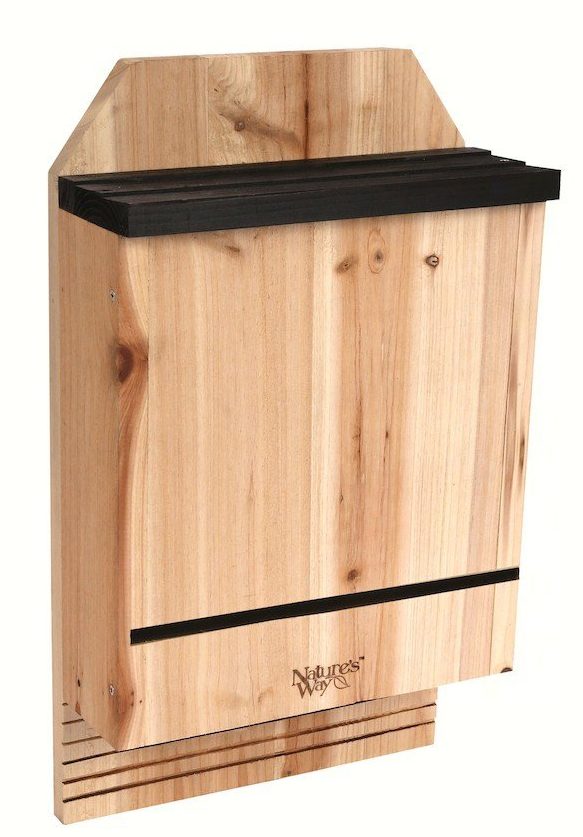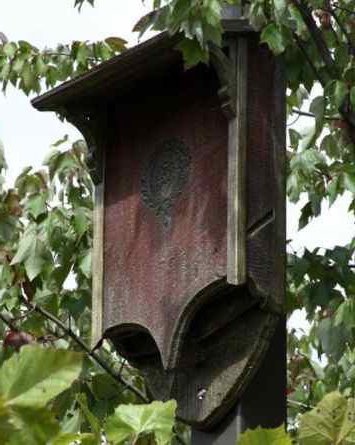-
October is National Bat Appreciation and Raptor Month
Celebrate Bats & Owls as October recognizes both cool species!
There couldn’t be a more fitting time of year to think about bats! The great thing is that bat houses and owl boxes help both species thrive, and they’ll take you up on cozy digs if offered in suitable habitat.
Beneficial to have around your property for rodent and insect control, bats and owls could use a helping hand as their natural habitats continue to shrink.
If you’ve ever climbed up in the attic to find a bat or two clinging to the vent screen… it can be a bit unnerving! But the flying mammals are fairly harmless and sadly, quite misunderstood. Popular at Halloween for their cryptic character, the Organization for Bat Conservation (OBC) has been established to educate and inspire people to save bats.
Installing a bat house is advantageous as these not-so mysterious creatures consume thousands of insects nightly, not to mention that as pollinators, bats help gardens thrive. Cool factoid: Being the sole pollinator of the agave plant, if it weren’t for bats there would be no tequila! Bat boxes are available from single- to 5-chambers, in durable cedar or recycled plastic.
WHHHOOOOO would’ve thunk it?
Owls seize every opportunity to find shelter and food sources wherever possible. When it comes to habitat, owls are versatile as they reside in wooded areas (most common), rain forests, grasslands, and open prairie. As long as owls are able to stake claim to their own territory and hide from predators during the day, they are survivors.
The common misunderstanding is that owls live in tree-tops but the reality is, they live in tree trunks, abandoned structures and barn rafters. Some live in shrubs and bushes where you would never think to look for them. Often, these birds are not found high off the ground as many people believe. Owls will use a suitable hollowed out log or opening in a tree for nesting, bud sadly dead trees and snags are often discarded by land owners.
Truth be told is that owls need not be perched up high to find their prey. They’ll hunt right from their nest location or owl house instead of using a perch like most birds. Some owl species like the Great Horned- will not start a new nest, instead claiming nests of other raptors or Common Ravens that have been left behind. Barn Owls are known to roost year-round in their houses, so clean-out is best during non-breeding months in January/February.
Because owls are an isolating and territorial species, it’s believed that habitat loss could become critical for future survival. Even though they’re highly adaptable, owls like other wildlife are limited in what they can do without their natural habitat.
Interested in learning more to assist these majestic raptors? Install a species-specific owl house to offer cozy habitat for nesting and roosting.
-
Add a Bee or Butterfly Feeder & Help Pollinators Thrive
“I am currently turning my weedy flower garden into a bird station with flowers for pollinators! (no more weeds!) I am very excited about my project and will have it completed by next Spring. So I am having fun perusing your website and procuring items to begin installation after Winter. For now, I’m preparing soil and tweaking my plans. Thanks for your wonderful shop! ” ~Nancy
The note above was recently sent in by a customer and friend… it’s simply music to our ears! Consider adding a bee or butterfly feeder to help all pollinators and to ease the great monarch migration in fall.
Fall plantings beyond your traditional mum varieties will extend your garden’s blooming season and even better yet, continue to attract butterflies! By choosing some of these beautiful, fall blooming plans in your garden, you’ll enjoy an abundance of blooms and continue to attract butterflies.
Even though we see a plethora of butterflies in spring and summer months surrounding our flowers, there are still many that have a need for nectar in the fall. Some varieties have migration paths as long as thousands of miles, so good nectar sources are needed along the way. Many butterflies are not migratory and continue searching for nourishment locally. Try your hand at some of these fall plantings for an additional bonus of butterflies to your garden!
Think red, yellow, pink, purple and other bright colors as you design your garden’s artistic palette of blooms for fall. Many flowers attract butterflies and are suitable for almost any garden. Consider plants that can withstand the season’s first or second frost. Some recommended plantings are:- Sedums: Easy to grow plants in gravelly soil in full sun with decent drainage.
Pink and Purple Asters: When sheared in the spring can produce a mound of pleasing, compact loads of daisy-like blooms - Salvia: Continue to bloom through the first hard frost come in many varieties and produce tubular blossoms to attract swallowtails, fritillaries, and other butterflies
- Latana: A favorite of butterflies that blooms in the summer until a hard, killing frost.
- Penta: A true love of the butterfly! Colors are typically bright red and work well in beds, borders, or in pots on a patio
Dark Night - Bluebears: Drought-tolerant for those of you living in dryer regions. Produces clusters of deep-blue flowers and typically grows 3 to 4 feet tall.
Remember, these are just a few varieties of fall bloomers to get you started! Consider fall planting choices for beauty-enhancing blooms and the additional benefit of nourishment for our butterfly friends!
- Sedums: Easy to grow plants in gravelly soil in full sun with decent drainage.
-
Grandpa’s Pet Bat Didn’t use a Bat House
They’re creepy and they’re kooky, mysterious and spooky… remember the theme song? Maybe old enough like us to mix them up with the family residing at 1313 Mockingbird Lane.
It was Grandpa from the Munster’s who had the pet bat! Only showing him in flight, I don’t recall ever seeing his bat house, can you remember his name? Regardless, both of those theme songs keep replaying in the brain.
On a more serious note, it’s believed that about 44% of bees have perished this year from pesticide poisoning, which is really scary! Like the birds & bees, bats are also major pollinators of tropical plants and fruit, they’re considered the night shift pollinators.
Thankfully, more folks are tuning into the needs of these friendly flying mammals with fur. Offering bat houses for roosting actually helps promote pollination. Aside from the thousand of insects consumed nightly, pollination is a huge draw. Especially for the agave plant, because without it- there would be no tequila!
From bat house kits and large capacity bat houses to artisan crafted bat shelters, there’s now a great variety of ways to offer proper roosting spots.
Materials vary from recycled plastic and cedar to aged barn wood for a more rustic appeal. There’s even several plans available online to build your own.
It may prove difficult at first to attract them, residing near a pond or lake greatly increase chances of occupancy. Recommended height is 12 to 15 feet, with a clear pathway to entry.
Facing SE or SW allows the bat house to receive maximum sun exposure for retained heat. Structures of brick, stone or wood are ideal mounting surfaces as they also retain heat. Metal- not so much. A pole may be easiest as the shelter can be attached while still on the ground, and then erected with bat house already secured.
Either way, bat houses are definitely something worth looking into. With holiday approaching they’d make an excellent gift for the nature-lover on your list.
And Grandpa’s bat… Igor, of course!

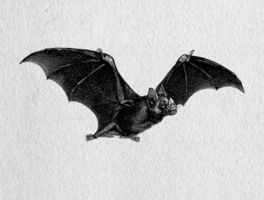 There couldn’t be a more fitting time of year to think about bats! The great thing is that bat houses and owl boxes help both species thrive, and they’ll take you up on cozy digs if offered in suitable habitat.
There couldn’t be a more fitting time of year to think about bats! The great thing is that bat houses and owl boxes help both species thrive, and they’ll take you up on cozy digs if offered in suitable habitat.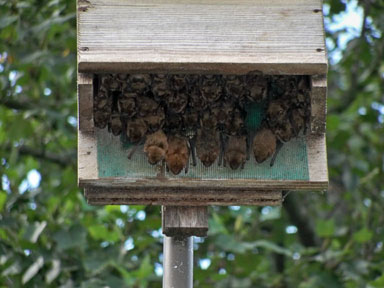
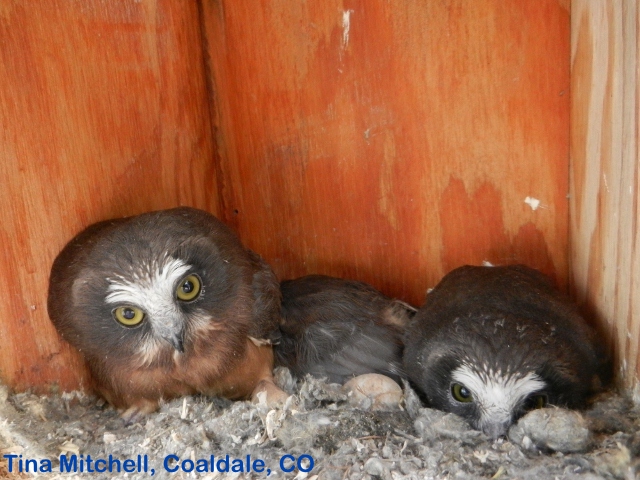
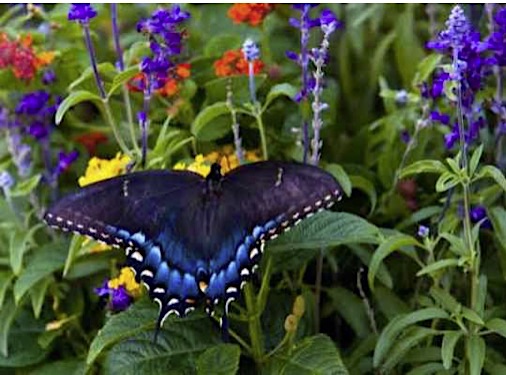
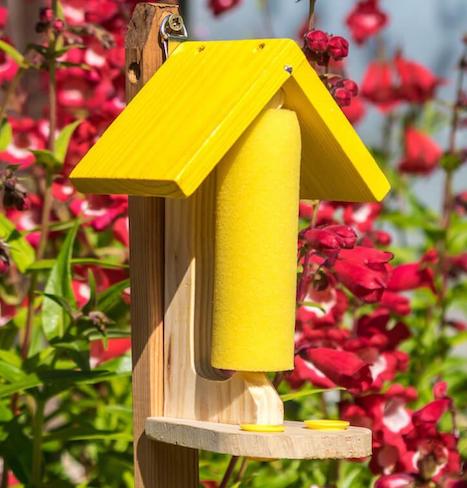
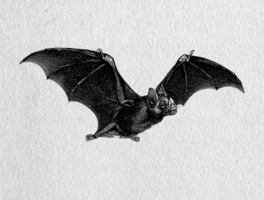 They’re creepy and they’re kooky, mysterious and spooky… remember the theme song? Maybe old enough like us to mix them up with the family residing at 1313 Mockingbird Lane.
They’re creepy and they’re kooky, mysterious and spooky… remember the theme song? Maybe old enough like us to mix them up with the family residing at 1313 Mockingbird Lane.